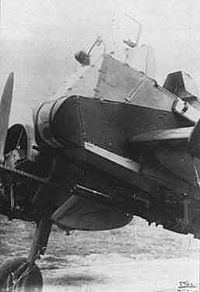Top speed 172 km/h Length 8.72 m | Wingspan 17 m First flight 1942 | |
 | ||
Tomashevich pegas surprise ace
The Pegas was a World War II Soviet ground attack prototype aircraft built before the Battle of Kursk (1943), designed to destroy tanks and German vehicles.
Contents
Development and design
Dmitri Lyudvigovich Tomashevich was the chief designer on the Polikarpov I-180 fighter before the crash of the prototype, killing test pilot Valery Chkalov lead to Tomashevich being arrested and sent to a NKVD run Special Prison in January 1939, where he assisted Andrei Tupolev in the design of the Tupolev Tu-2.
In August 1941, Tomashevich was evacuated to Omsk in Siberia where he was put in charge of his own design bureau. In 1942, inspired by the success of the simple Polikarpov Po-2 biplane as a night ground-attack aircraft, Tomashyevich was authorised to design and build a simple ground attack aircraft that would be much more capable than the Po-2 but could be built at the same price.
The resulting design was a low winged monoplane with a fixed tail-wheel undercarriage, of wooden construction, with pine frames and birch plywood skins. The pilot sat in an open cockpit which was protected by mild-steel armour plating designed to withstand 12.7 mm (0.50 in) bullets. It was powered by two Shvetsov M-11F engines (the same powerplant used by the Po-2) and was armed with two 23 mm (0.906 in) cannon and a heavy machine gun in the nose, with the option of replacing the cannon by up to 500 kg (1,102.311 lb) of bombs. An optional jettison-able upper wing was tested on Pegas-01
The first prototype made its maiden flight in late 1942, proving to be overweight and underpowered, although the aircraft's handling was acceptable. It was hoped to test one of the prototypes at the Kursk front, but the distance from Omsk to the front-line made that impractical, and development of the type was abandoned after four prototypes were built.
Specifications
Data from Russian Aircraft since 1940, The Osprey Encyclopaedia of Russian Aircraft 1875–1995
General characteristics
Performance
Armament
